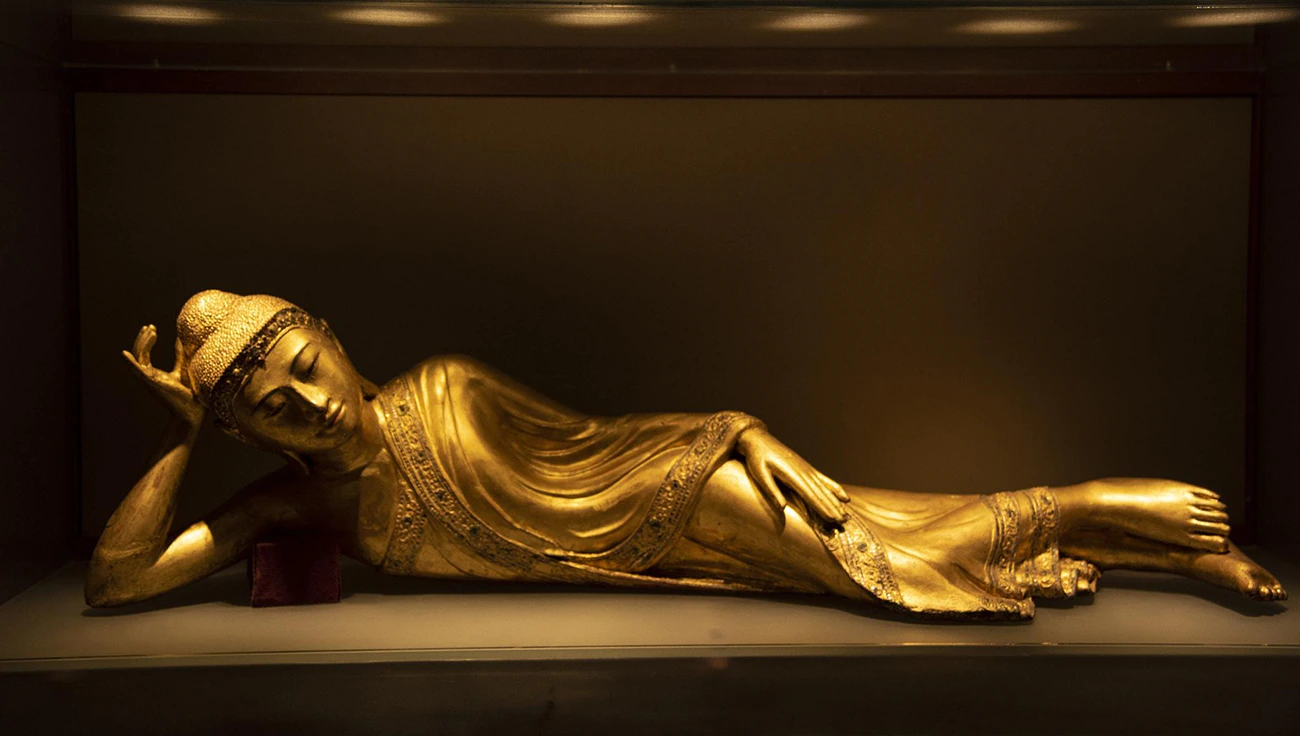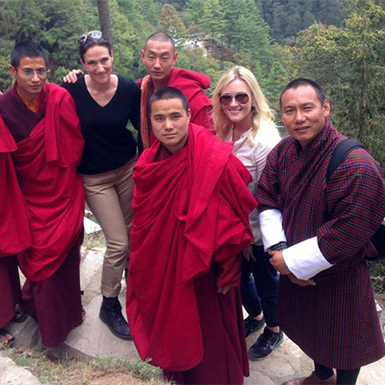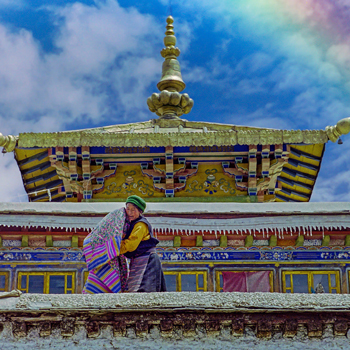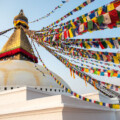Buddha Shakyamuni, a transformative figure in spiritual and philosophical thought, entered the world as Siddhartha Gautama in the 6th century BCE. Born in Lumbini, a region now part of Nepal, he grew up as a prince, shielded from life’s hardships. However, witnessing the unavoidable suffering of sickness, old age, and death sparked a deep yearning for understanding and a way to transcend pain.
This thirst for truth led him to abandon his royal privileges. He undertook an arduous tour, seeking guidance from various spiritual teachers and exploring different practices. Ultimately, through dedicated meditation and an unyielding spirit, he reached the pinnacle of enlightenment, becoming the Buddha, meaning “the Awakened One.” This profound realization would forever change the course of history.
The Sage of the Shakya Clan
The name “Shakyamuni” honors the Buddha’s roots. “Shakya” refers to his ancestral clan, a respected group in ancient India known for their wisdom and leadership. The title signifies his lineage and his extraordinary attainment of profound knowledge and insight.
As “Shakyamuni,” the Buddha embodies the highest aspirations of his people. He stands as a revered sage, a wise teacher, and an enlightened being who has broken free from the confines of ordinary life. The title signifies his familial connection and profound role as a guiding light, radiating wisdom and compassion to all living beings.

The Transformative Life of Buddha Shakyamuni: A Journey to Enlightenment
Buddha Shakyamuni’s life story is a testament to the power of transformation and spiritual awakening. His tour from a sheltered prince to an enlightened teacher captivates hearts and minds worldwide. His teachings, embodied in art and celebrated in festivals, offer a timeless guide to inner peace and wisdom.
A Privileged Start in the Shakya Kingdom
Siddhartha Gautama, the future Shakyamuni, was born into royalty in the 6th century BCE. He lived a wealthy life in Lumbini, now part of Nepal. As the son of King Suddhodana, ruler of the Shakya kingdom, he lacked for nothing. Prophecies foretold a remarkable destiny for the young prince: he would either become a powerful king or a profound spiritual leader.
Confronting Life’s Harsh Realities: The Awakening of Suffering
Despite his father’s efforts to shield him, Siddhartha could not remain oblivious to the pain and suffering present in the world. During ventures beyond the palace walls, he witnessed the realities of sickness, aging, and death. These encounters shattered his sheltered worldview and ignited a deep spiritual yearning within him.
The Great Renunciation: A Prince Abandons His Throne
At the age of 29, Siddhartha made a courageous decision. He left behind his royal life, family, and privileged existence to seek answers to the suffering he had witnessed. This renunciation marked the beginning of his transformative quest for enlightenment.
The Pursuit of Truth: Trials and Spiritual Exploration
Siddhartha’s quest led him down various paths. He sought out teachers and explored diverse spiritual practices, including extreme asceticism. However, he found that neither luxury nor deprivation was the key to true liberation. He sought a middle way.
Enlightenment Under the Bodhi Tree: Buddha Is Born
Siddhartha’s relentless search for truth culminated under a Bodhi tree in Bodh Gaya. He meditated intensely, determined to find an end to suffering. After 49 days of unwavering focus, he attained a profound awakening, becoming the Buddha, “the Awakened One.”
The Birth of the Dharma: Buddha Shakyamuni’s Profound Teachings
Buddha Shakyamuni’s enlightenment marked the birth of a new spiritual tradition. He generously shared his newfound wisdom through teachings known as the Dharma. The core of these teachings lies in the following:
- The Four Noble Truths Are Recognising the reality of suffering, understanding its origins, acknowledging its end, and embracing the path that leads to liberation.
- The Eightfold Path: A practical guide to ending suffering involves cultivating ethical conduct, practicing mental discipline, and developing wisdom.
The Enduring Legacy of Buddha Shakyamuni
The Buddha’s legacy continues to flourish:
- Buddha Shakyamuni Art: His serene image graces countless sculptures, paintings, and murals, symbolizing peace, wisdom, and enlightenment.
- Buddha Shakyamuni Festivals: Vibrant celebrations like Vesak honor his birth, enlightenment, and passing, fostering mindfulness and spiritual connection.
The Core Teachings of Buddha Shakyamuni: A Path to Liberation
Buddha Shakyamuni’s philosophy offers a timeless guide to understanding the human experience, navigating suffering, and cultivating lasting peace. His teachings, deeply rooted in ancient wisdom, still hold profound relevance for people today.
The Four Noble Truths: Unraveling the Nature of Suffering
Shakyamuni’s Four Noble Truths serve as the fundamental principles of Buddhist philosophy. They illuminate the reality of suffering, its origins, its cessation, and the path to liberation:
- The Truth of Suffering (Dukkha): Suffering, pain, and discontent interweave with life. This suffering encompasses physical and emotional pain and a more profound existential unease.
- The Origin of Suffering (Samudaya): Our cravings and attachments are the fuel that feeds suffering. We cling to desires, expectations, and a false sense of self, creating a cycle of frustration and discontent.
- The Truth of the End of Suffering (Nirodha): We can break free from suffering by overcoming these cravings and attachments. This liberation, known as Nirvana, is a state of profound peace and freedom.
- The Way to Nirvana (Magga): This uses the term “Nirvana,” a central concept in Buddhism, representing the ultimate state of liberation from suffering.

The Eightfold Path: A Practical Path to Transformation
The Eightfold Path, called the Middle Way, guides us toward balance, wisdom, and ethical living. It’s a tour with eight interconnected steps:
- Proper Understanding: Gaining a clear comprehension of the Four Noble Truths and the nature of reality.
- Right Intention: Fostering thoughts of kindness, compassion, and a commitment to non-harm is fundamental to living ethically and promoting a peaceful, harmonious society.
- Right Speech: Speaking truthfully, kindly, and avoiding language that could hurt or divide.
- Right Action: Behaving ethically, treating all beings with respect, and avoiding actions that cause harm.
- Right Livelihood: Earning a living in an ethical manner that aligns with your values and doesn’t harm others.
- Right Effort: Nurturing positive qualities while letting go of negative ones.
- Right Mindfulness: Cultivating present-moment awareness of your thoughts, feelings, and actions without judgment.
- Right Concentration: Focusing your mind through meditation to develop deeper states of calm and insight.
Beyond the Basics: Exploring Additional Key Teachings
Buddha Shakyamuni’s wisdom extended beyond these core principles. He emphasized the importance of:
- The Middle Way: Avoiding extremes in all aspects of life, finding a harmonious balance.
- Impermanence (Anicca): Recognizing that everything is in flux, nothing is permanent.
- No-Self (Anatta): Understanding that there is no fixed, unchanging self.
- Karma: Accepting that our actions have consequences, both in this life and future lives.
Buddha’s Teachings in Daily Life
Although ancient, Buddha Shakyamuni’s teachings hold immense value for our modern lives. Embracing the Four Noble Truths and following the Eightfold Path can lead us to:
- Mindfulness: A heightened awareness of the present moment, our thoughts, feelings, and actions.
- Compassion: Cultivating compassion and deep connections requires a profound understanding and empathy for the suffering of others.
- Wisdom: Insight into the true nature of reality and the causes of suffering.
- Inner Peace: A state of tranquility and contentment that arises from releasing attachments and aversions.
Message of Compassion and Wisdom: A Global Spiritual Legacy
Buddha Shakyamuni’s teachings, the foundation of Buddhism, have transcended borders and centuries to become a worldwide spiritual phenomenon. His message of compassion, wisdom, and the path to enlightenment continues to shape cultures and inspire individuals seeking a more meaningful existence.
From Humble Origins to a Wide-Reaching Movement
Buddhism’s story began humbly in ancient India, with Shakyamuni sharing his profound insights with people from all walks of life. His teachings resonated with those seeking a way out of suffering, and as his followers grew, so did the influence of his message.
As his teachings are known, the Dharma traveled beyond India along the Silk Road and other trade routes. Cultural exchange and the inherent appeal of the Buddha’s message fueled its expansion throughout Asia, sparking a spiritual awakening in diverse lands.
The Disciples: Carrying the Torch of Buddha’s Wisdom
Buddha Shakyamuni’s disciples were crucial in spreading his teachings far and wide. Shakyamuni urged his followers to share the Dharma, insisting on maintaining its purity and clarity.
Key figures like Ananda, Sariputta, and Moggallana became powerful voices for the Buddha’s message. They traveled extensively, establishing monastic communities and guiding new adherents in the principles of Buddhism.
A Tapestry of Buddhist Schools: Diverse Interpretations, Shared Roots
As Buddhism spread across Asia, it adapted to different cultures and traditions, creating a rich tapestry of distinct schools. Each school developed unique interpretations and practices, but all drew inspiration from the core teachings of Buddha Shakyamuni.
- Theravada Buddhism: Flourishing in Southeast Asia, this school emphasizes the monastic path and close adherence to the original teachings of the Buddha. It focuses on personal liberation through meditation and ethical living.
- Mahayana Buddhism: Prevalent in East Asia, this school expands upon the concept of compassion and the bodhisattva path – a path dedicated to helping others achieve enlightenment.
- Vajrayana Buddhism: Rooted in Tibet and Bhutan, this school incorporates esoteric practices and rituals to accelerate spiritual progress towards enlightenment.
Buddha Shakyamuni’s Enduring Legacy: Art, Festivals, and Timeless Wisdom
Although each school has its unique flavor, they all share a common origin in the teachings of Buddha Shakyamuni. His message of compassion, wisdom, and the pursuit of enlightenment continues to resonate deeply across cultures. The Buddha’s legacy endures in:
- Art: His serene image graces sculptures, paintings, and murals, inspiring tranquility and contemplation.
- Festivals: Vibrant celebrations like Vesak honor his birth, enlightenment, and passing, offering opportunities for reflection and spiritual practice.
- Teachings: Buddha Shakyamuni’s Four Noble Truths and Eightfold Path offer enduring wisdom for understanding the human experience and navigating life’s difficulties with compassion and insight.

Historical and Archaeological Evidence
While legends often surround Buddha Shakyamuni, historical texts and archaeological discoveries illuminate his life and the early days of Buddhism. These tangible traces offer a fascinating window into the birth of one of the world’s most influential religions.
Ancient Texts: Echoes of a Spiritual Awakening
Numerous historical texts chronicle Buddha Shakyamuni’s life and teachings, painting a vivid portrait of his time and the profound impact of his message.
- Pali Canon: Revered by Theravada Buddhists, this collection of scriptures, written in the ancient Pali language, is the most authoritative source. It contains discourses attributed to Shakyamuni and accounts of his life and the early Buddhist community.
- Agamas: These early Buddhist texts, written in various languages, offer complementary perspectives on the Buddha’s teachings and the practices of the first monastic communities.
- Travelogues of Chinese Pilgrims: Intrepid explorers like Faxian and Xuanzang toured India, driven by their thirst for Buddhist knowledge. Their accounts provide invaluable historical context and details about Buddhist sites and practices in ancient India.
Archaeological Treasures: Walking in the Buddha’s Footsteps
Archaeological sites across India and Nepal offer tangible proof of Buddha Shakyamuni’s existence and the early growth of Buddhism. These sacred places hold deep meaning for Buddhists worldwide and provide a window into the historical and cultural landscape of the Buddha’s time.
- Lumbini (Nepal): Lumbini, revered as Siddhartha Gautama’s birthplace, holds UNESCO World Heritage status. Excavations have revealed ancient temples, monasteries, and a stone pillar erected by Emperor Ashoka in the 3rd century BCE to honor the Buddha’s birth.
- Bodh Gaya (India): This is where Shakyamuni reached enlightenment. Bodh Gaya is home to the majestic Mahabodhi Temple, built around the sacred Bodhi tree where this transformative event occurred.
- Sarnath (India): Sarnath is where the Buddha initiated the teachings of Buddhism by delivering his first sermon. The Dhamek Stupa stands as a prominent landmark, along with the ruins of ancient monasteries.
- Kushinagar (India): Believed to be the place of Buddha Shakyamuni’s passing (Parinirvana), Kushinagar houses the Parinirvana Stupa and the Mahaparinirvana Temple, revered sites for Buddhist pilgrims.
Where History and Faith Intertwine
The historical and archaeological evidence surrounding Buddha Shakyamuni offers a fascinating tour into the past. It forges a tangible connection to the life and teachings of a figure whose legacy inspires and guides countless people. While myths and legends may embellish some details of his life, the historical and archaeological records undeniably affirm the profound impact of his message and the enduring power of his teachings.
Decoding the Symbolism of Buddha Shakyamuni in Art and Iconography
Artistic depictions of Buddha Shakyamuni, the founder of Buddhism, overflow with rich symbolism. They create a visual language that narrates his life story, teachings, and tour to enlightenment. Understanding these symbols deepens our appreciation for the art itself and brings us closer to the essence of his profound message.
The Buddha’s Image: More Than a Portrait
Portrayals of Siddhartha Gautama are far more than superficial likenesses. His posture, hand gestures (mudras), and facial features are symbolic in every detail.
- The Lotus Flower: A beloved symbol in Buddhist art, the lotus embodies purity and spiritual awakening. As a lotus emerges unblemished from muddy waters, so can individuals overcome life’s struggles and reach enlightenment.
- The Dharma Wheel (Dharmachakra): The wheel represents the Buddha’s teachings, the cyclical nature of existence, and the path to liberation. Its eight spokes mirror the Eightfold Path, the Buddha’s practical roadmap to end suffering.
- The Bodhi Tree: The Bodhi tree, where Buddha Shakyamuni attained enlightenment, embodies wisdom, resilience, and the inherent capacity for spiritual awakening within each of us.
- Ushnisha (Crown Protuberance): The bump on the Buddha’s head indicates his heightened consciousness and profound wisdom.
- Urna (Forehead Mark): This mark between his eyebrows signifies his spiritual insight and the “third eye,” the eye of wisdom.
- Long Earlobes: The elongated earlobes remind the Buddha of his past life as a prince adorned with heavy earrings. They also symbolize his capacity for deep and attentive listening.
Mudras: Wordless Expressions of Profound Truths
The Buddha’s hand gestures, known as mudras, communicate specific meanings and states of being:
- Bhumisparsha Mudra (Earth-Touching Gesture): This gesture evokes the moment of the Buddha’s enlightenment when he called upon the earth to witness his victory over temptation and delusion.
- Dhyana Mudra (Meditation Gesture): With both hands resting in his lap, palms upturned, this mudra signifies deep meditation, intense focus, and serenity.
- Abhaya Mudra (Fearlessness Gesture): The raised right hand with an open palm expresses protection, peace, and the dispelling of fear.
- Varada Mudra (Wish-Granting Gesture): The right hand extended downward with an open palm symbolizes compassion, generosity, and the offering of blessings.
A Kaleidoscope of Artistic Traditions
Buddha Shakyamuni is depicted in many artistic styles across different cultures, creating a diverse and captivating visual representation of his legacy.
- Indian Art: Early representations often used symbols like footprints, the Bodhi tree, or the Dharma wheel to represent the Buddha’s presence rather than depicting his physical form.
- Gandharan Art: This Greco-Buddhist style, which flourished in present-day Pakistan and Afghanistan, introduced more lifelike portrayals of the Buddha, featuring flowing robes and idealized features.
- Chinese and Japanese Art: East Asian artistic traditions often emphasize the Buddha’s tranquility and wisdom, portraying him in serene, meditative poses with a peaceful expression.
Buddha Shakyamuni’s Wisdom for Modern Life: A Timeless Guide
Although ancient, Buddha Shakyamuni’s teachings continue to provide profound guidance for navigating the complexities of contemporary life.
His emphasis on mindfulness, ethical living, compassion, and interconnectedness offers a roadmap to well-being and a deeper understanding of ourselves and our world.
Finding Peace in Our Fast-Paced World: Embracing Mindfulness
Modern life often feels like a whirlwind of information, demands, and distractions. Buddha Shakyamuni’s teachings on mindfulness offer a sanctuary from the chaos. Mindfulness means cultivating a focused awareness of the present moment – our thoughts, emotions, and sensations – without judgment. Modern practitioners integrate mindfulness into their lives in various ways:
- Meditation: A daily meditation practice, even if brief, helps us train our minds to stay focused, react less impulsively, and develop a more profound sense of compassion.
- Mindful Breathing: Mindful breathing throughout the day grounds us in the present moment and alleviates stress.
- Mindful Activities: By engaging in them, we can transform routine activities like eating, walking, or even washing dishes thoroughly and with intention into mindful exercises.
- Mindfulness Apps and Courses: Technology makes mindfulness accessible to all, with many apps and courses offering guided meditations and exercises.
Navigating Life’s Challenges with Wisdom: The Four Noble Truths
Suffering is an unavoidable part of the human experience. Buddha Shakyamuni’s Four Noble Truths offer a practical roadmap to understanding and overcoming the root causes of suffering. Modern practitioners apply these truths by:
- Acknowledging Suffering: We recognize suffering in our lives, whether physical, emotional, or existential.
- Examining the Causes: We investigate the root causes of our suffering, often stemming from craving, aversion, or ignorance.
- Embracing the Possibility of Freedom: We understand that suffering doesn’t have to be permanent; we can overcome it.
- Following the Eightfold Path: The Buddha’s comprehensive path guides us toward ethical conduct, mental discipline, and wisdom, ultimately leading to liberation.
Cultivating Compassion in a Divided World
In a world marked by division and discord, the Buddha’s teachings on compassion and loving-kindness offer a powerful antidote. Compassion is a profound understanding of another’s suffering and a heartfelt wish to relieve it. Modern practitioners cultivate compassion through:
- Metta (Loving-Kindness) Meditation: This practice cultivates feelings of warmth and goodwill towards ourselves, our loved ones, neutral acquaintances, and even those we find difficult.
- Acts of Kindness: Engaging in selfless acts, big or small, helps develop a more compassionate heart.
- Challenging Prejudice: We actively confront our biases and prejudices, striving for greater understanding and empathy towards others.
Living in Harmony with Nature: A Timely Message
Buddha Shakyamuni emphasized the interconnectedness of all beings and the importance of living in harmony with the natural world. In today’s era of environmental challenges, this message takes on urgent significance. Modern practitioners strive to live in harmony with nature by:
- Practicing Mindful Consumption means becoming aware of our consumption habits and their environmental impact, making conscious choices to reduce waste and minimize our ecological footprint.
- Supporting Sustainable Practices: We actively support organizations and initiatives that promote environmental sustainability and protect our planet.
- Fostering Gratitude for Nature: Spending time in nature and appreciating its beauty nurtures a deeper connection and motivates us to care for our environment.
Bridge Between Faiths and Philosophies
Buddha Shakyamuni’s teachings occupy a unique position in the global spiritual landscape. They resonate with many while standing apart from other major religions and philosophies. It makes Siddhartha Gautama a central figure in discussions between different faiths and a source of inspiration for spiritual seekers from diverse backgrounds.
A Comparative Lens: Buddha Shakyamuni Alongside Other Spiritual Paths
While Buddha Shakyamuni’s teachings share some common threads with various religious and philosophical traditions, they also offer a distinct perspective on life’s meaning, suffering, and the tour toward liberation.
Shared Values
- Ethical Living: Buddhism, like many faiths, emphasizes the importance of moral behavior, compassion, and non-violence for personal growth and spiritual development.
- Spiritual Practices: Meditation and mindfulness are not unique to Buddhism. Hinduism, various forms of Christianity, and certain branches of Islam also include these elements.
- Inner Transformation: Many spiritual traditions stress the significance of inner transformation, self-awareness, and the development of virtues like kindness and wisdom.
Unique Perspectives
- No Creator God: Unlike many religions that believe in a creator god or deity, Buddhism focuses on each individual’s potential for awakening and liberation.
- The Illusion of Self (Anatta): Siddhartha Gautama rejected the notion of a fixed, eternal self or soul, a core belief in many other religions.
- Living in the Present: Buddhism emphasizes understanding and transforming the present moment rather than focusing solely on the promise of salvation in an afterlife.
Buddha Shakyamuni’s Enduring Influence: Shaping Other Traditions
The Buddha’s teachings have profoundly influenced other spiritual traditions, leaving a lasting mark on their evolution.
- Hinduism: The Buddha’s emphasis on non-violence (ahimsa) and compassion left a lasting impression on Hindu thought and practice.
- Jainism: Jainism and Buddhism share common ground in focusing on non-violence, ethical behavior, and seeking liberation from suffering.
- Christianity: Some scholars see parallels between the Buddha’s teachings on compassion and forgiveness and those of Jesus Christ.
- Modern Mindfulness: The Buddha’s emphasis on mindfulness has gained significant traction in Western psychology and psychotherapy, leading to the development of mindfulness-based therapies for various mental health conditions.
Celebration of Life, Enlightenment, and Teachings
Across the globe, Buddhists and spiritual seekers alike honor Buddha Shakyamuni’s life and teachings through vibrant festivals and meaningful observances. These celebrations offer a chance to delve deeper into his profound wisdom, pay homage to his extraordinary tour, and embody his timeless message of compassion and enlightenment.
Vesak (Buddha Day): A Global Celebration of Enlightenment
Vesak, or Buddha Day, is the most significant festival in the Buddhist calendar. It marks three pivotal events in the Buddha’s life: his birth, enlightenment (when he became Buddha Shakyamuni), and passing (parinirvana). Typically falling on the full moon in May, Vesak’s exact date varies slightly across Buddhist traditions. Vesak Celebrations Around the World:
- Lumbini (Nepal): Lumbini, the sacred birthplace of Buddha, becomes a focal point of pilgrimage and devotion during the Vesak festival. Devotees flock to the Maya Devi Temple to offer prayers and join processions. The sacred site comes alive with colorful decorations and radiant lights, creating a genuinely festive atmosphere.
- Bodh Gaya (India): The Mahabodhi Temple, built where the Buddha achieved enlightenment, becomes a central hub of activity. People gather to meditate under the Bodhi tree, participate in religious ceremonies, and offer flowers and incense.
- Sarnath (India): Vesak marks where the Buddha delivered his first sermon. Special prayers and insightful teachings mark Vesak at Sarnath. The Dhamek Stupa, a prominent landmark, illuminates the night as pilgrims walk around it in reverence.
- Thailand: Vesak is a national holiday celebrated with great joy and enthusiasm. Vibrant flags and lanterns adorn temples. Devotees express their generosity by releasing caged birds and offering food to monks.
- Sri Lanka: Sri Lanka dedicates an entire week to Vesak festivities. Homes and streets glow with colorful lanterns, while temporary structures called “pandals” depict scenes from the Buddha’s life. Devotees participate in processions, chanting, and meditation.
Honoring Buddha Shakyamuni Throughout the Year: Other Festivals
Beyond Vesak, Buddhists celebrate several other festivals that commemorate significant events in the Buddha’s life:
- Magha Puja (Sangha Day): This festival honors the spontaneous gathering of 1,250 enlightened disciples who came to hear the Buddha’s teachings.
- Asalha Puja (Dhar a Day): This day marks the Buddha’s first sermon in Sarnath, when he set the “Wheel of Dharma” in motion, spreading his teachings across the land.
- Uposatha: Observed on full moon and new moon days, Uposatha is a time for quiet reflection, meditation, and ethical conduct.
The Heart of Buddhist Festivals
Regardless of location or specific tradition, Buddhist festivals share common themes:
- Remembering the Buddha: They honor his life, teachings, and enduring message of compassion, wisdom, and inner peace.
- Spiritual Renewal: Festivals offer a space for introspection, meditation, and deepening one’s spiritual practice.
- Community Building: Celebrations bring Buddhist communities together, fostering a sense of shared values and interconnectedness.
- Generosity and Service: Many festivals encourage acts of kindness and generosity, such as offering food to monks or donating to those in need.







